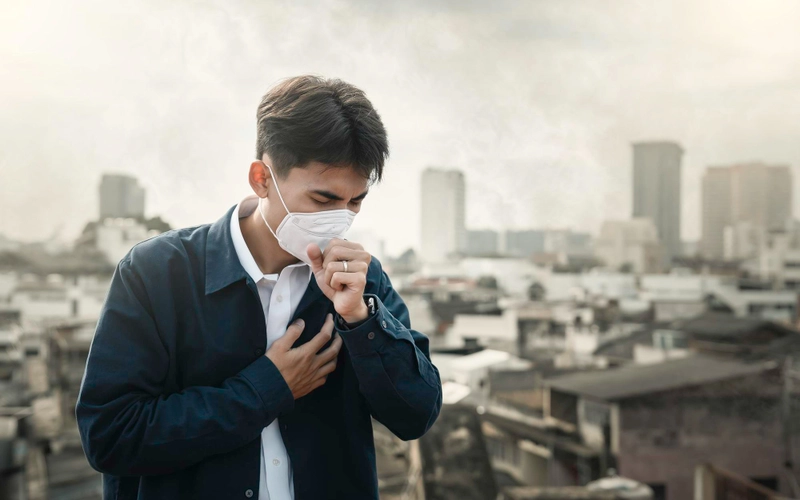- Published on: Nov 21, 2024
- 3 minute read
- By: SecondMedic Expert
How To Stay Safe During Flu And Upper Respiratory Illness Season
The flu and upper respiratory illnesses are common during the colder months. However, with the right precautions, you can minimize your risk of falling ill. This blog will provide flu season safety tips and highlight effective strategies, such as how to avoid respiratory infections, preventing flu at home, choosing the best masks for flu season, and tips to boost immunity during flu season. These practical, actionable steps will help you and your family stay safe.
Understanding the Flu and Upper Respiratory Illness
Upper respiratory illnesses, such as the flu, can be caused by various viruses that thrive in colder weather. The symptoms often include fever, cough, sore throat, and congestion. These illnesses can spread easily through droplets, contaminated surfaces, or close contact. Therefore, adopting best practices for flu prevention in winter is essential.
Best Practices for Flu Prevention
a) Flu Season Safety Tips
-
Get Vaccinated: The flu vaccine is one of the most effective ways to reduce the risk of infection. It prepares your immune system to fight off the virus.
-
Wash Hands Frequently: Proper hand hygiene helps prevent virus transmission. Use soap and wash for at least 20 seconds.
-
Practice Social Distancing: Avoid crowded areas, especially if there are known outbreaks in your community.
-
Stay Home When Sick: If you or your family members show flu-like symptoms, rest and recover to prevent spreading the illness.
b) Daily Habits to Avoid Upper Respiratory Illness
-
Cover your mouth and nose while sneezing or coughing, ideally with a tissue or your elbow.
-
Regularly disinfect commonly touched surfaces like doorknobs, smartphones, and light switches.
-
Avoid touching your face, especially your mouth, nose, and eyes.
Preventing Respiratory Infections at Home
a) Improving Ventilation
Good airflow reduces the concentration of airborne viruses indoors. Use air purifiers or open windows when possible.
b) Hygienic Practices
Create a routine of cleaning shared spaces like kitchens and bathrooms. Ensure everyone in the household follows hygiene protocols to reduce exposure.
c) Healthy Lifestyle Choices
-
Incorporate foods to boost immunity in flu season, such as citrus fruits, leafy greens, and nuts.
-
Drink plenty of water and herbal teas to stay hydrated.
-
Maintain a balanced sleep schedule, as rest is essential for immune function.
Using the Best Masks for Flu Season
Wearing masks has become a vital tool for flu prevention. When choosing a mask:
-
Opt for surgical masks or N95 respirators for high-risk environments.
-
Ensure a snug fit over the nose and mouth for maximum protection.
-
Replace disposable masks regularly and wash reusable ones after every use.
Masks are especially important in crowded or poorly ventilated spaces, where the risk of virus transmission is higher.
Home Remedies to Strengthen Immunity for Flu
Boosting your immunity can act as a natural shield against infections. Here are some simple remedies:
-
Herbal Teas: Ginger, turmeric, and honey teas are known for their anti-inflammatory properties.
-
Vitamin C: Consuming oranges, strawberries, and broccoli strengthens the immune system.
-
Probiotics: Yogurt and fermented foods support gut health, which is closely linked to overall immunity.
Foods to Boost Immunity in Flu Season
A nutritious diet is essential for staying healthy during the flu season. Include:
-
Citrus Fruits: Rich in Vitamin C, they enhance the immune system.
-
Garlic and Ginger: These have natural antimicrobial properties.
-
Nuts and Seeds: Almonds, sunflower seeds, and flaxseeds provide essential vitamins and omega-3 fatty acids.
-
Leafy Greens: Spinach and kale are packed with antioxidants and vitamins.
When to Seek Medical Attention
While most flu cases can be managed at home, some symptoms require medical attention:
-
Persistent fever or severe headache
-
Difficulty breathing or chest pain
-
Confusion or dizziness
In such cases, consult a healthcare provider promptly. At Second Medic, we offer expert diagnostic and consultation services to guide you through flu and respiratory illness management.
Final Thoughts
By following these tips and adopting best practices for flu prevention in winter, you can significantly reduce the risk of flu and upper respiratory illnesses. Whether it’s practicing proper hygiene, wearing the right mask, or consuming immunity-boosting foods, every small effort contributes to better health.
Stay proactive this flu season with Second Medic's services. Book your lab tests today to take control of your health!
Read FAQs
A. Maintaining proper hand hygiene, disinfecting common surfaces, boosting immunity through a healthy diet, and wearing masks in high-risk areas are some of the most effective ways to prevent infections at home.
A. You can enhance your immunity by eating a balanced diet rich in Vitamin C, consuming probiotic-rich foods like yoghurt, drinking herbal teas with ginger and turmeric, and maintaining regular sleep and hydration routines
A. Seek medical care if you experience severe symptoms like persistent high fever, chest pain, difficulty breathing, or confusion, as these could indicate complications requiring professional attention.
Our Services
Request A Callback
Recent Posts
High Blood Pressure: Everything You Need to Know
Apr 24,2025










